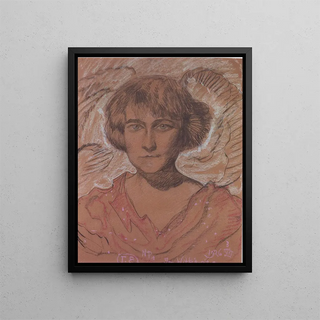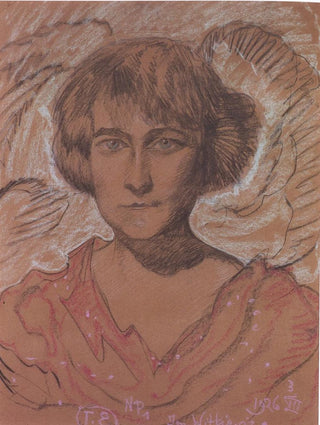Art print | Portrait of Kazimiera Uławska - Stanisław Ignacy Witkiewicz Source: Reproduction | Portrait de Kazimiera Uławska - Stanisław Ignacy Witkiewicz


View from behind

Frame (optional)
In the fascinating world of art, some works transcend their era to become timeless witnesses to humanity. The portrait of Kazimiera Uławska, created by Stanisław Ignacy Witkiewicz, perfectly fits into this category. This representation, imbued with psychological depth and sensitivity, invites the viewer to delve into the intimate universe of its subject. Kazimiera Uławska, an emblematic figure of Polish society in the early 20th century, is captured here in all her complexity, revealing not only her outer beauty but also the very essence of her being. Through this portrait, the artist manages to establish a dialogue between the subject and the observer, an exchange where each gaze becomes an exploration of human emotions.
Style and uniqueness of the work
Witkiewicz's work stands out for its innovative approach and unique style, blending expressionism with influences of symbolism. In the portrait of Kazimiera Uławska, one perceives a bold use of colors and shapes, which give the whole a striking dynamism. Kazimiera's facial features are both delicate and assertive, translating a fascinating duality. The artist does not merely reproduce the appearance of his model; he seeks to capture her soul, to reveal the hidden emotions behind a smile or a gaze. This quest for psychological truth is reinforced by a background that, although simple, accentuates the presence of the central figure. Thus, every detail, every brushstroke, contributes to creating an atmosphere that is both intimate and universal, where the viewer is invited to feel and reflect.
The artist and his influence
Stanisław Ignacy Witkiewicz, known as Witkacy, is a major figure in Polish art of the 20th century. Both painter, playwright, and philosopher, he developed an artistic language that is uniquely his own, standing out through his bold approach and reflections on the human condition. His work is often marked by a tension between the inner world of the individual and external influences of society. Wit

Matte finish

View from behind

Frame (optional)
In the fascinating world of art, some works transcend their era to become timeless witnesses to humanity. The portrait of Kazimiera Uławska, created by Stanisław Ignacy Witkiewicz, perfectly fits into this category. This representation, imbued with psychological depth and sensitivity, invites the viewer to delve into the intimate universe of its subject. Kazimiera Uławska, an emblematic figure of Polish society in the early 20th century, is captured here in all her complexity, revealing not only her outer beauty but also the very essence of her being. Through this portrait, the artist manages to establish a dialogue between the subject and the observer, an exchange where each gaze becomes an exploration of human emotions.
Style and uniqueness of the work
Witkiewicz's work stands out for its innovative approach and unique style, blending expressionism with influences of symbolism. In the portrait of Kazimiera Uławska, one perceives a bold use of colors and shapes, which give the whole a striking dynamism. Kazimiera's facial features are both delicate and assertive, translating a fascinating duality. The artist does not merely reproduce the appearance of his model; he seeks to capture her soul, to reveal the hidden emotions behind a smile or a gaze. This quest for psychological truth is reinforced by a background that, although simple, accentuates the presence of the central figure. Thus, every detail, every brushstroke, contributes to creating an atmosphere that is both intimate and universal, where the viewer is invited to feel and reflect.
The artist and his influence
Stanisław Ignacy Witkiewicz, known as Witkacy, is a major figure in Polish art of the 20th century. Both painter, playwright, and philosopher, he developed an artistic language that is uniquely his own, standing out through his bold approach and reflections on the human condition. His work is often marked by a tension between the inner world of the individual and external influences of society. Wit






